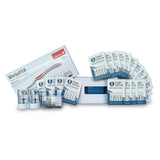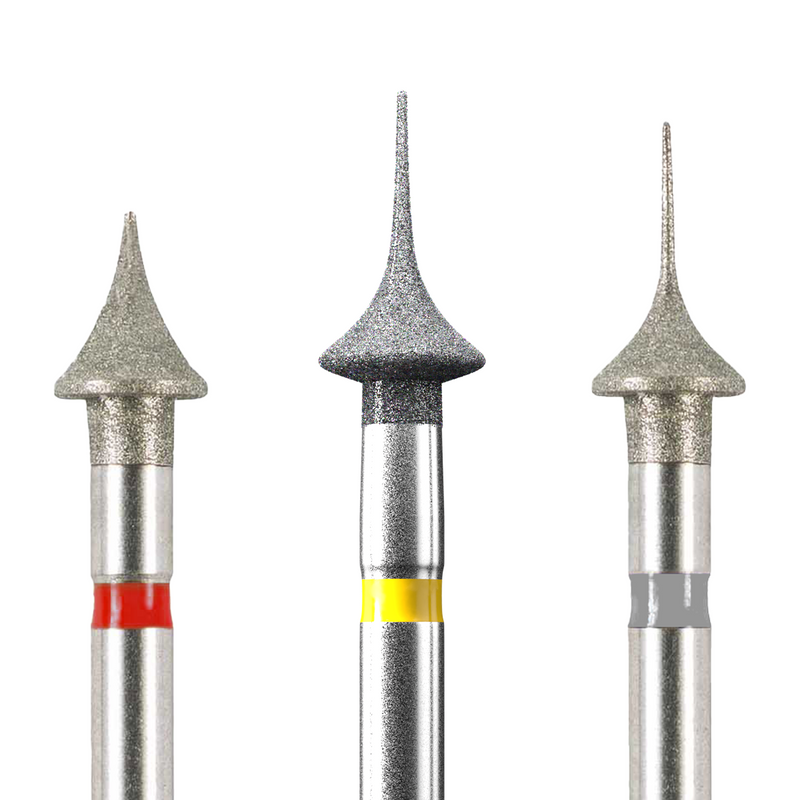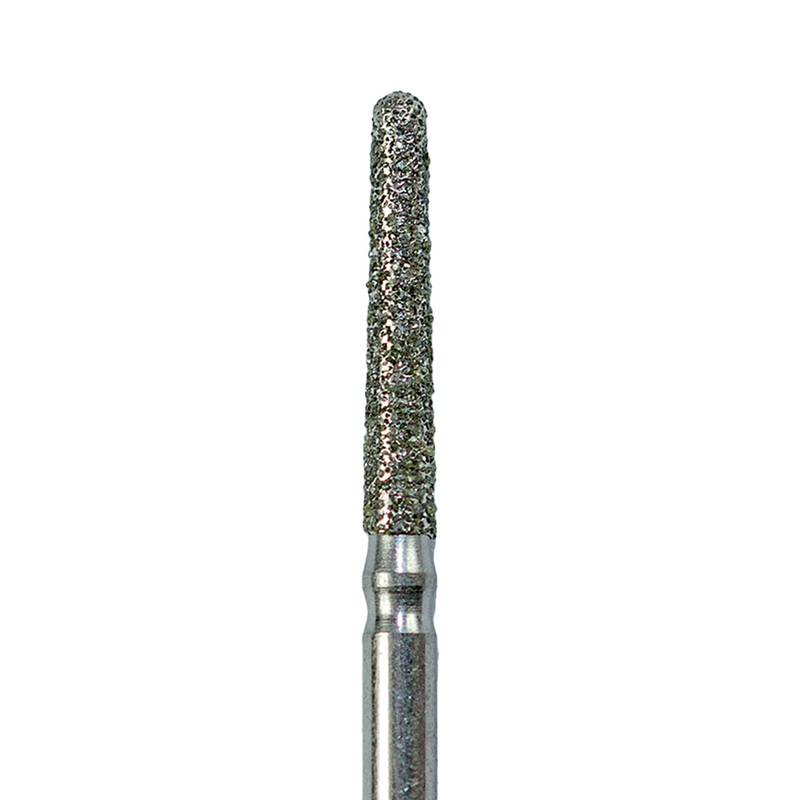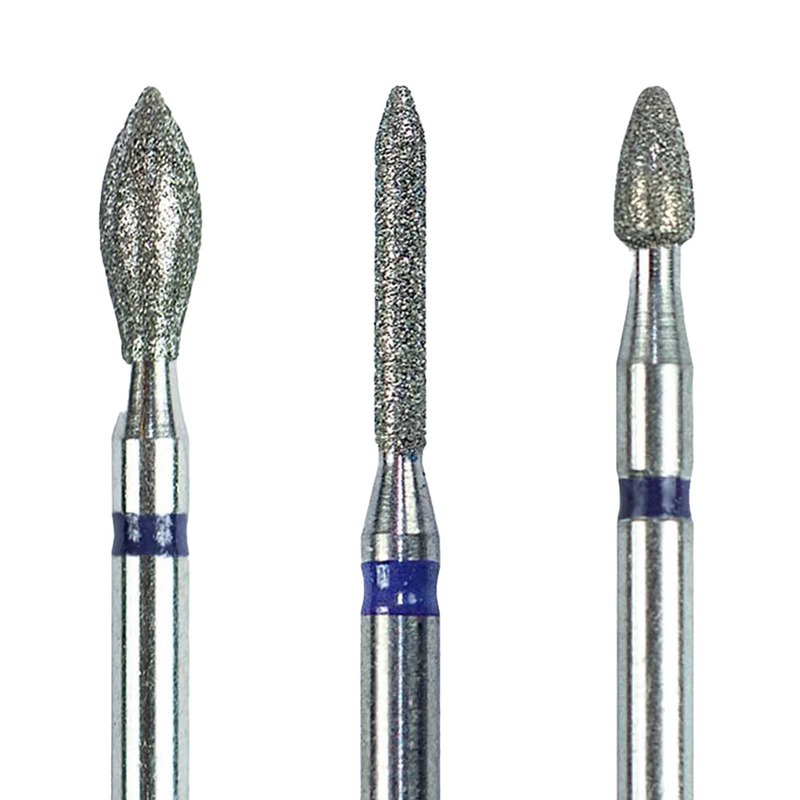0 comments
Dental burs guide: introduction to shapes, shanks and grits
Among the many tools that are essential to the dentistry profession, dental burs are definitely high on the list. Dental burs are used to remove harmful plaque and cut through enamel before fitting cavity and crown fillings.
There are many different kinds of dental burs, which contain specific components for specific dental applications. In this article, we'll break down the main components that create the difference between the various kinds of dental burs, and describe their significance.
Types of burs: The Key Parameters
Generally speaking, dental burs differ from one another in a number of key categories. These categories are recognized by ISO, which has prepared an elaborate coding system for dental rotary systems. This coding system is the standard that dental bur manufacturers refer to when designing and manufacturing their instruments. In this article, we'll be focusing on four categories: materials, shanks, shapes and grit size.
Materials of dental burs
Dental burs are made from different materials, and every material offers unique advantages.
Diamond burs, which are made from diamond grit, are known for their precision and grinding strength. These qualities make them ideal for grinding through teeth enamel and ceramics, without having to worry about inner pulp tissue damage.
Carbide burs are another popular option. Made from an extremely strong compound called tungsten carbide, these burs are commonly used to cut through enamel in cavity filling applications and dental surgeries.
Steel burs are made from stainless steel. Due to their material, these burs are often a more cost-efficient choice for dentists, but they tend to wear more easily. They are also more prone to corrosion. That said, steel burs are more flexible than diamond burs and carbide burs, and are therefore less susceptible to breaking.
Finally we have Gold burs which are specially made for precision grinding of the tooth and have longer life. Although they are less common, gold plated burs are highly efficient, they keep lower temperature during work and also provide a better surface finishing.
Shanks of dental burs
The shank is the longest part of the dental bur, and fits into the handpiece. The three main dental bur shank types are HP, FG and RA, and are used in accordance with the required handpiece speed.
The Friction Grip shank (FG) is used in high-speed scenarios, while Hand Piece shanks (HP) are used for slow rotational speeds. The Right Angle shank (RA) is commonly selected for low and medium speeds, and also for contra angle handpieces used to treat areas that require a "bend" in order to reach them.
Shapes of dental burs
The shape of the dental bur also plays a central role in its operation. The shape relates to the dental bur head, which comes in direct contact with the teeth enamel or ceramics.
There are dozens of dental bur shapes, and each one is used in accordance with specific patient conditions and treatment.
When preparing patients for cavity fillings, it is common to use round or pear shaped bur.
The inverted cone is another popular shape, and is usually applied in procedures that require more forceful cutting.
Finishing burs constitute an entire bur-shape category, with many shapes to choose from, and are used for gentler procedures. It is also important to note that every bur shape comes in a variety of sizes.
Grits of dental burs
Every dental bur is characterized by a specific grit size. The grit size plays a part in the bur's processing abilities. Coarse grit size facilitates more powerful teeth grinding or cutting, while fine grit size is ideal for gentler processes such as finishing.
Things to Keep in Mind When Purchasing Dental Burs
When purchasing dental burs, it is recommended to address several concerns. The first concern is bur quality. You should make sure that your dental burs are manufactured from high-quality materials, in accordance with ISO standards. This will ensure their durability and will allow you to provide high-level service to your patients.
Another key parameter is flexibility. In order to cover a wide range of patient needs with optimal precision, a wide dental bur "toolkit" is highly recommended. This selection should include both diamond burs and carbide burs, and a wide variety of shanks and head shapes with different grit sizes.
The Bottom Line
As detailed extensively in this article, dental burs come in a variety of shapes and sizes. When you use many types of burs, you are able to exercise a high level of flexibility when treating patients, and work with a wide range of materials, speed levels and head granulations. It makes your work much easier, and allows your clinic to offer precision-based services.
That said, if you are looking to increase your dental bur variety, we recommend that you focus on bur quality and durability. These two traits will ensure that your tools will not disappoint you when you need them, and will help you perform your skills with maximum professionalism.
At Eagle Dental Burs, we sell numerous types of burs. Our durable product portfolio is known for promoting long-term cost-effectiveness. If you want to purchase premium-level burs that are both durable and cost-effective, Eagle Dental Burs is the place for you.
 Duties are now included in the product price
Duties are now included in the product price














0 comments